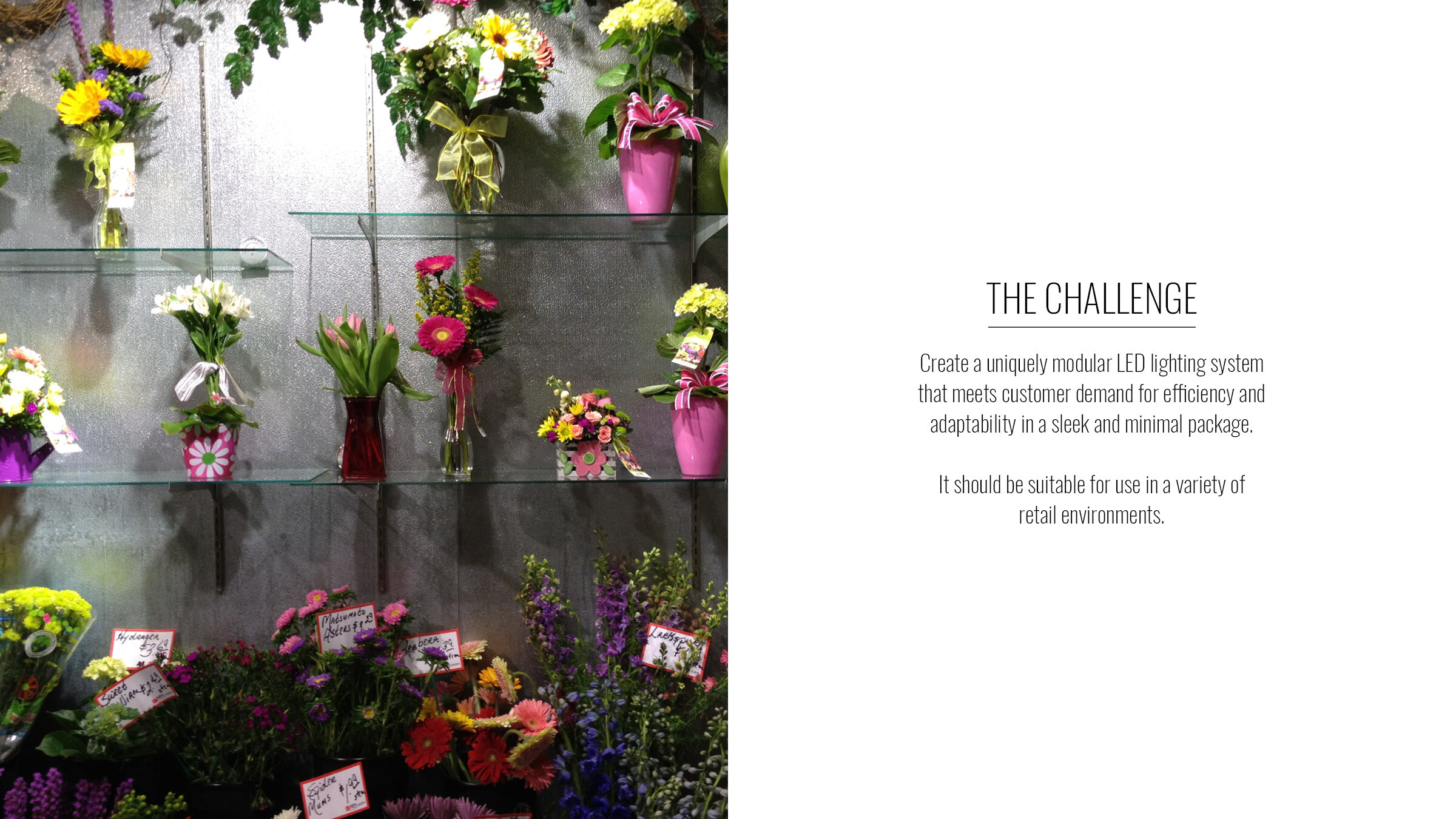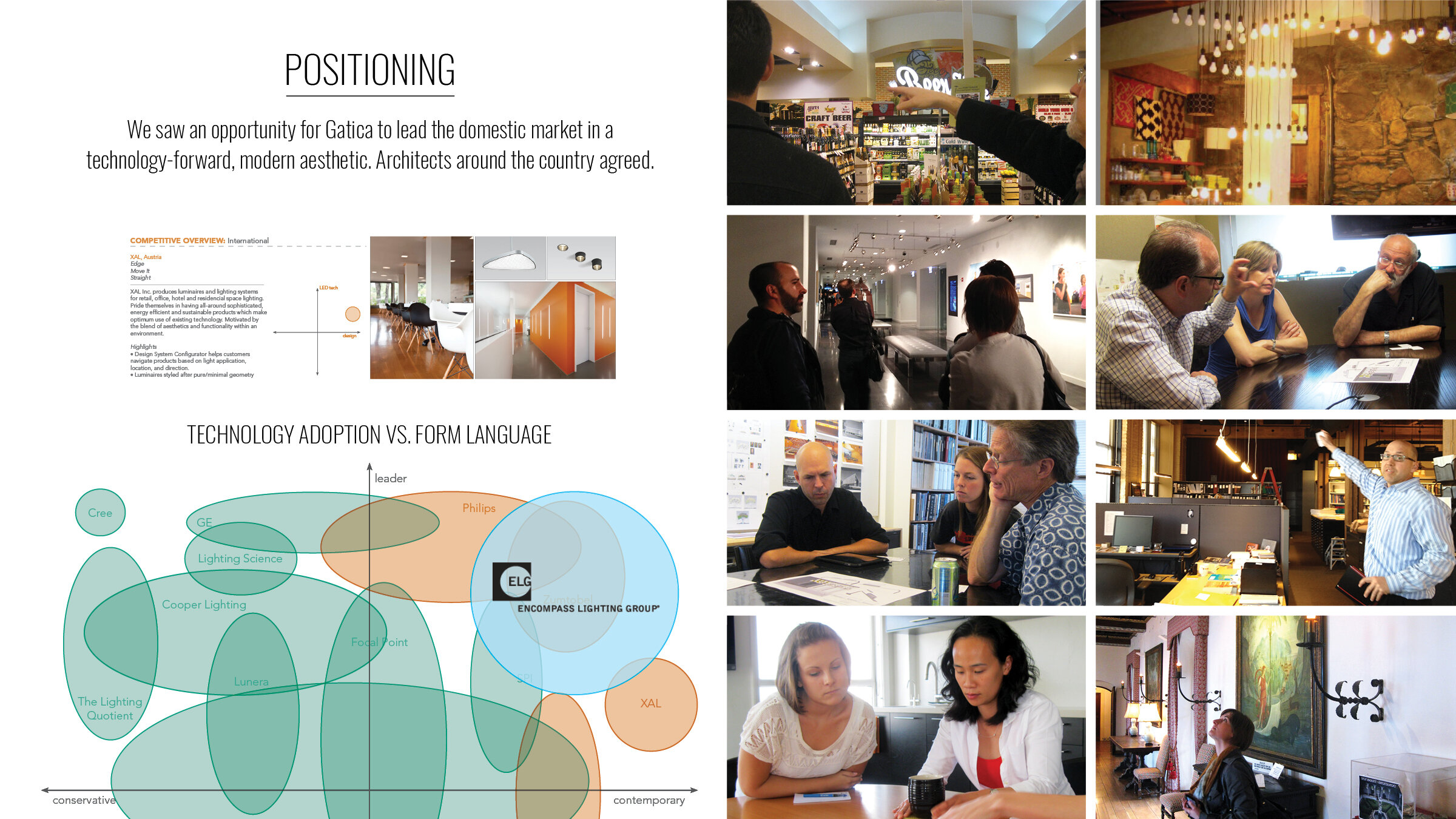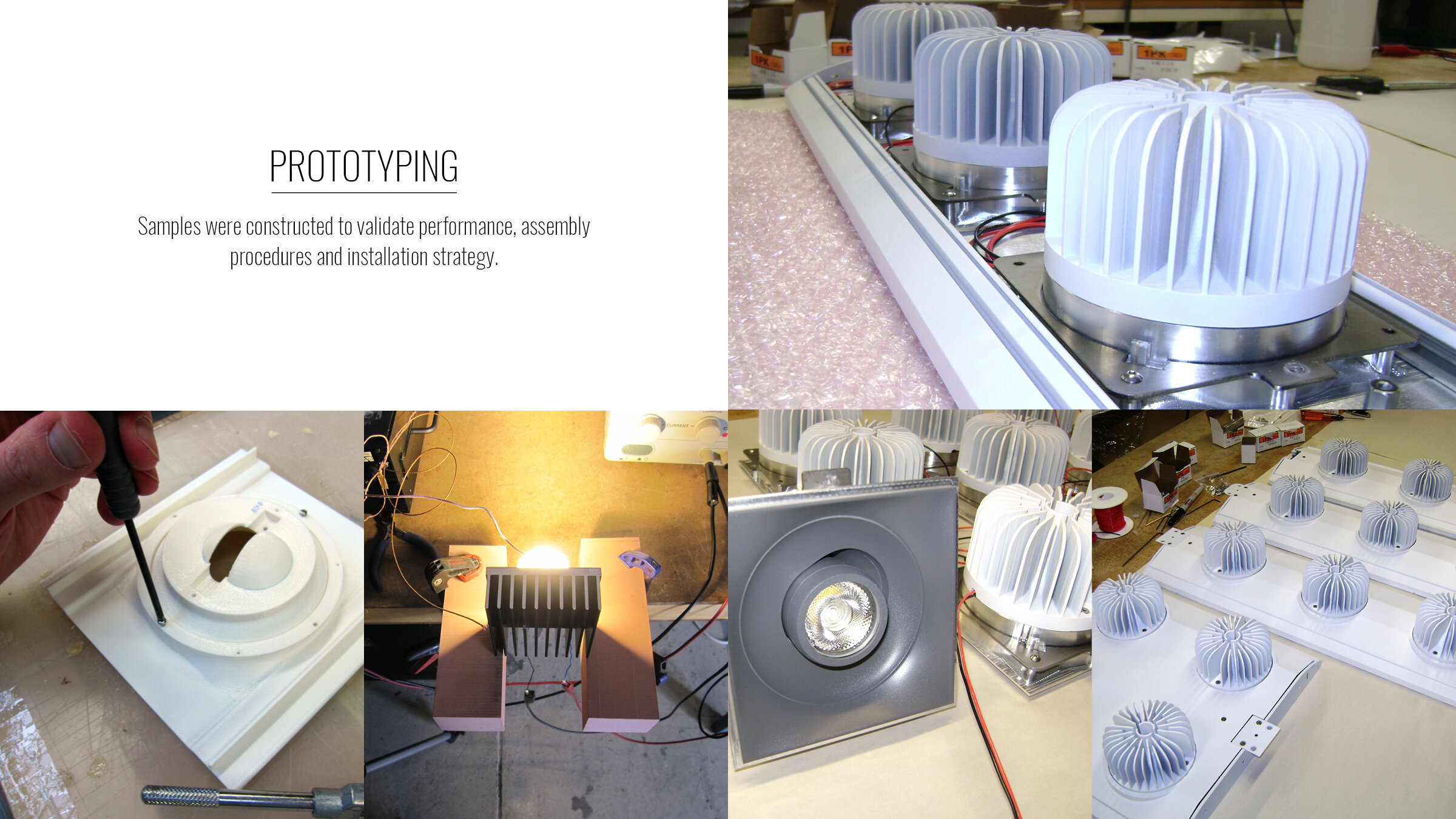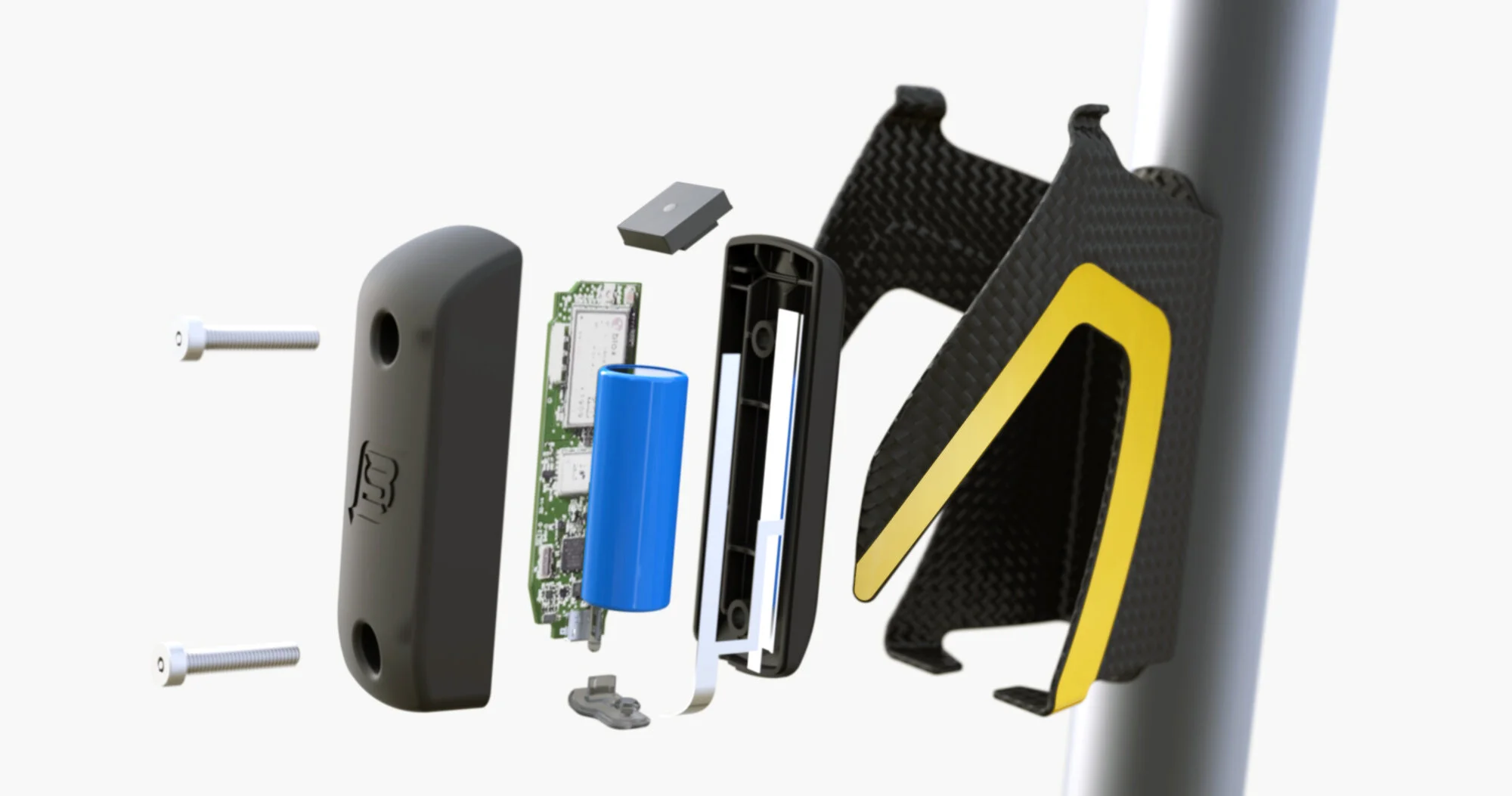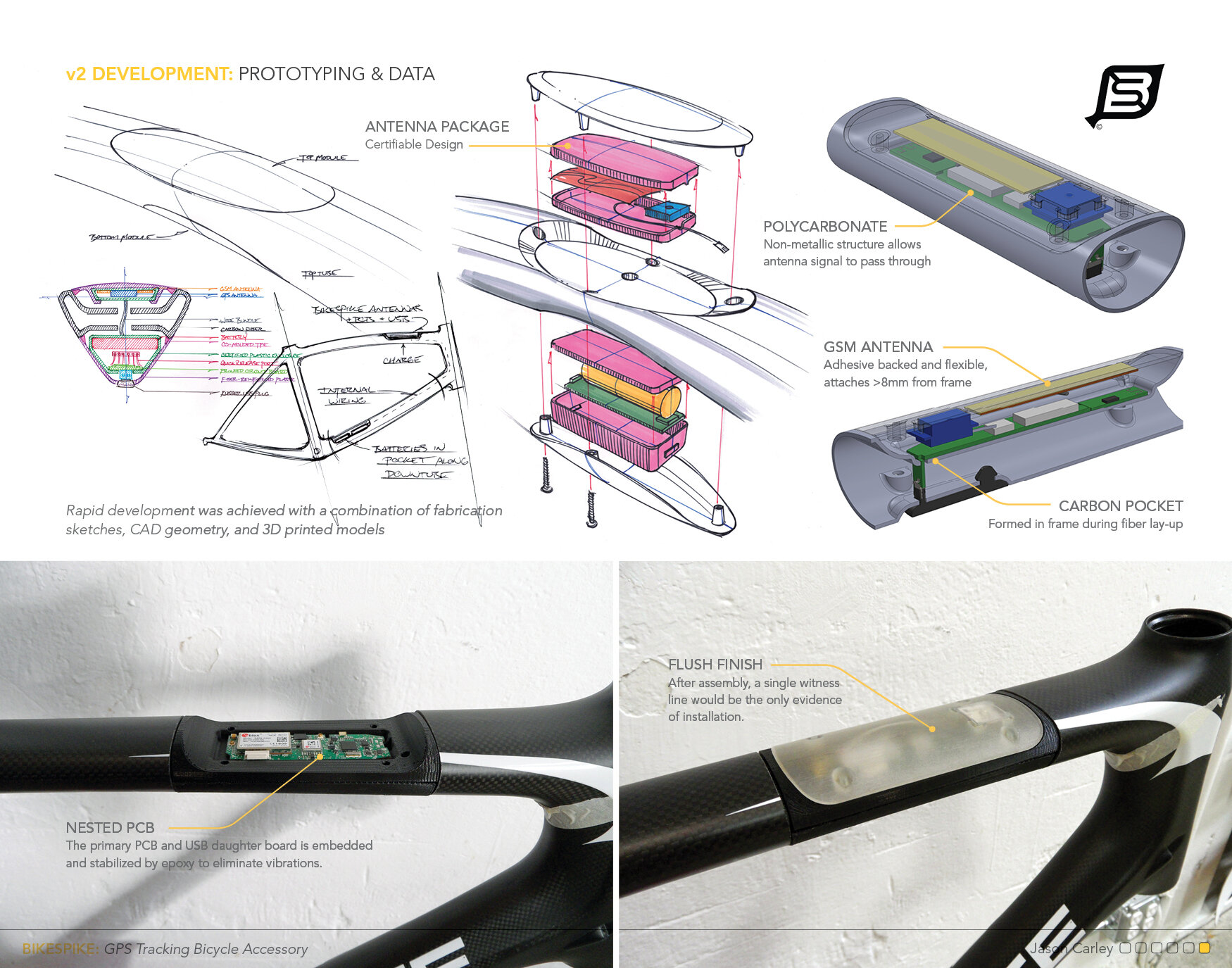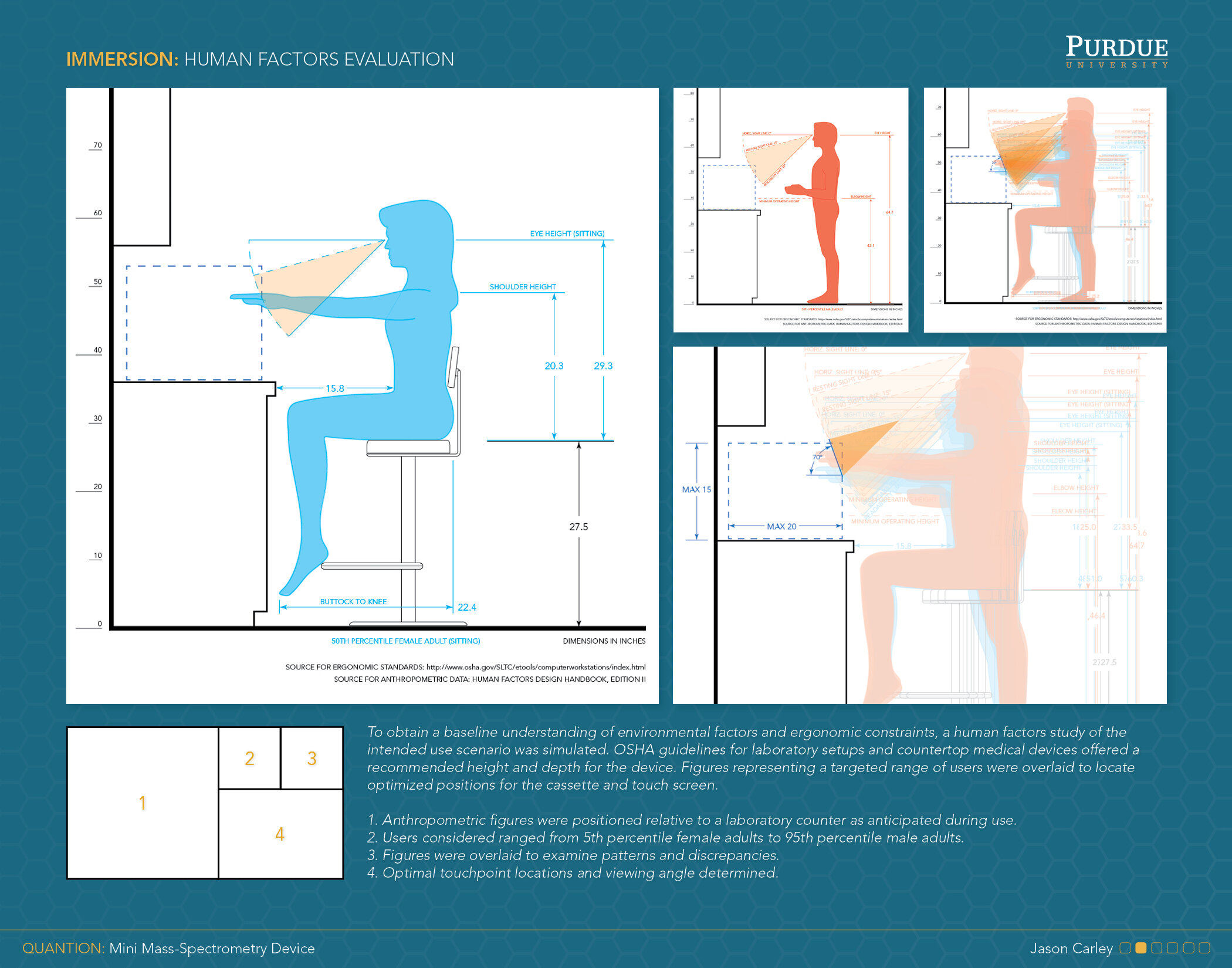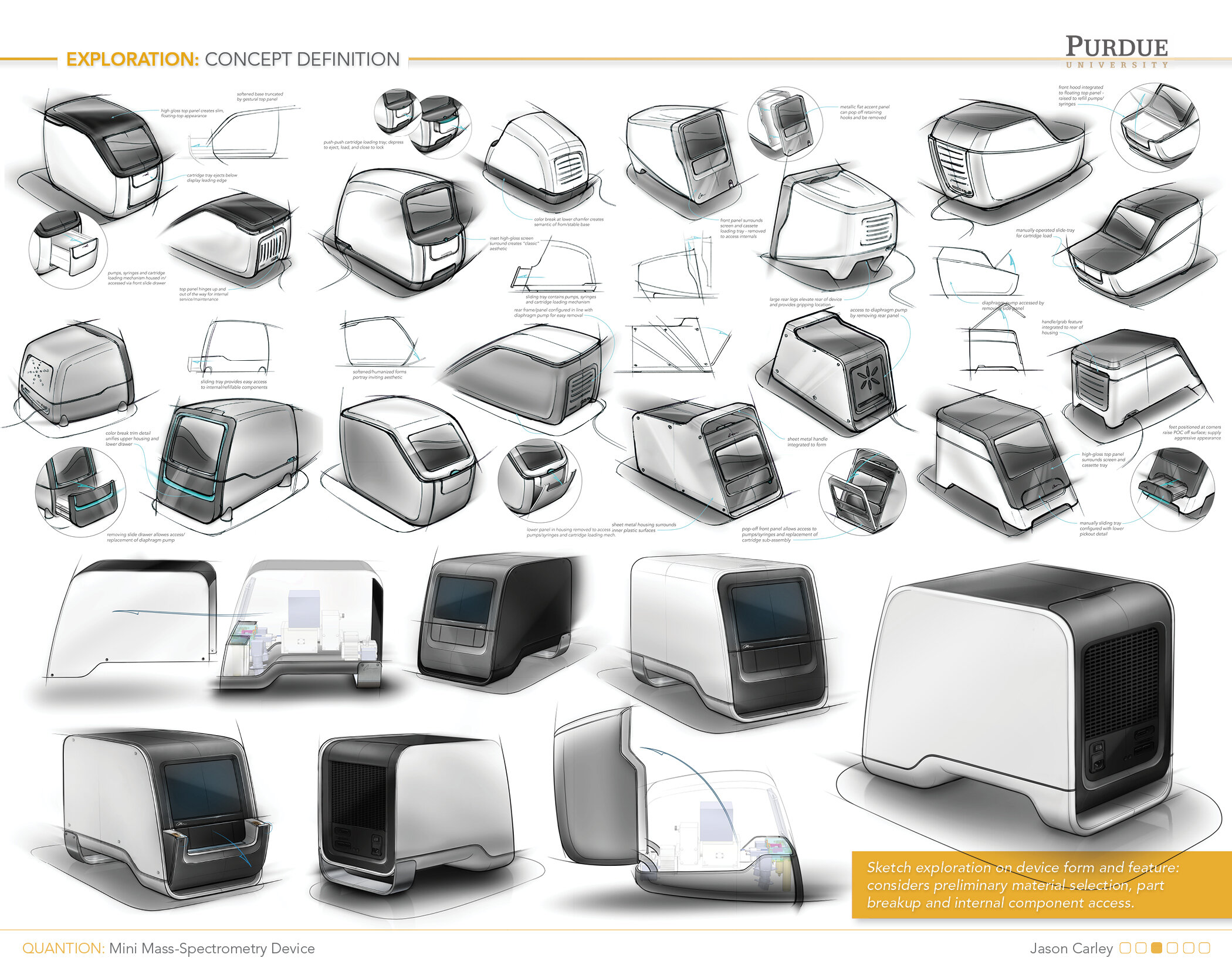A design and engineering effort to contain a sophisticated, edge-lit LED package within the simplest, most elegant form our envelope would allow. A form with a gentle arc along the top housing provided sufficient room for our connectors and power modules, while blending seamlessly into an unbroken side wall. I served as design lead during conceptualization and helped to direct engineering through its development.
Research, then Strategy
The last few months have put me through the wringer, but it seems like I’ve made it out the other side alright. Two large programs running in tandem meant a lot of long hours through August and September, skewing the work-life balance towards the former. Now that things are slowing back down to a normal clip, it’s time for some much-needed reflection.
I thought I’d start with the simple question - how did I get into this mess in the first place?
It’s easy to point at unrealistic timelines and feature creep and declare the trail end there, but these are merely side effects of a more significant root cause - a poor strategy. For this particular client, our approach was merely to keep them happy. They controlled the spec as “they knew their brand”, and we just had to deliver. This led to several issues with the project, including numerous spec changes, BOM inflation, copying the competition, and parallel pathing various architectures and component schemes. Naturally, this caused the timeline to slide and risked the success of the program and relationship with the client.
Rather than please the client, our strategy should have been to please the customer. For all the HCD’ers out there, I know this is a “duh” moment, but when there are a lot of cooks in the kitchen this principle is ignored alarmingly often. If some time was spent to “validate” the project direction in the beginning, a foundation could have been built to guide the client towards the right path forward. There are many methods that design researchers use to do this - ethnographies, online surveys, product journals, strategy canvases, etc. The key is to distill down to the appropriate path for this brand with these customers. Todd Bracher calls this “irreducible complexity” (more on that in another post!). This core idea informs price point, features, color/finish/material, UX, marketing/messaging, sales channel, etc. Without this foundation, how can you steer a client away from a bad idea or give them the confidence to commit to a key design decision? Taking “shortcuts” by not performing research is the equivalent of sprinting through a maze, seeing only the next wall in front of you, rather than marching straight and steadily towards the prize.
In my opinion, this leads to a better strategy - generate (or when necessary, validate) your brand’s North Star, and this will guide your customers home.
Healthy Critiques - The Golden Rule
We were treated to a surprise visit recently by one of our old classmates at college, and while catching up, had a wonderful conversation about design critiques. It served as a great refresher and a reminder that no matter how much we think we learn over the years, the basics are often a challenge to master.
Our guest brought up the “Golden Rule” of design critiques (the one that every freshman designer learns their first semester) which goes something like - don’t say that you like a piece or dislike a piece, explain that it “works” or “does not work”, because…X, Y, and Z. This trains a young designer to take the subjectivity out of a critique and focus on external factors, i.e. the user experience, intended audience, product requirements, inspiration, environment, client/brand values, etc. For example, “the choice of a metallized logo-plate ‘works’ here because of the brand’s industrial and premium aesthetic.” As, or perhaps more importantly, it begins a dialogue through which the originator may respond with their rationale, fostering healthy discussion.
It is so easy, among professionals, to forget this lesson and fail to make time for healthy dialogue within a team. When times get busy, I find that my teammates and I tend to zero-in on our own projects and don’t make the time to elicit feedback internally through this very simple exercise. The benefits are numerous. First, it challenges you to explain and defend a concept, making it easier to understand whether “it works” or whether its beauty is skin-deep. Multiple perspectives are a necessity for this. Secondly, and quite obviously, it improves the quality of the work. It allows for more iteration, more feedback, divergent ideas, and challenges the originator to refine. Lastly, I think it psychologically shares the feeling of ownership attributed to a piece. As a concept evolves to capture the feedback of the full team, each teammate may see their ideas embodied in some form. Thus, a final concept becomes less the victory of one creator and more of a win the whole team can participate in.
Discussing this basic technique brought back many fond memories of old classmates, projects, and the collaborative culture we had back in college. I will be making an effort to bring more of this style of dialogue into our studio and am sure that it will lead to some great design.
Lessons from Inventors Past: Empathy
I've been reflecting on a humorous story that I came across in a book about the Scientists of the Renaissance by physicist, John Gribbin. It involves Galileo and his (re)invention of the telescope, and for me, served to reinforce the importance of empathy and psychology in design research. I am currently in the discovery phase of a project so perhaps it was on the mind. I hope you find it as engaging and enlightening as I did!
What most people know about Galileo was that he was one of the most prominent early astronomers, renowned for his important discovery of the moons of Jupiter and for his contributions to mechanics and motion. The first of these was significant because it gave incontrovertible evidence of a planetary body's ability to possess satellites, which was hard to reconcile with the Earth-centered model containing crystalline spheres. This rocked the boat with the Church, as it supported the sun-centered Copernican model, which was considered taboo at the time.
This is usually where the story ends. Rarely in the history books do we learn what these great geniuses were like. What inspired them? Did they struggle or doubt? How close were they to throwing in the towel?
Now, the good part! According to Gribbin, Galileo's father had promised a sizable dowry to his daughter, shortly before his death. As Galileo was the eldest male, he inherited this debt and struggled to keep pace with payments during much of his academic and professional life. As a professor of mathematics, Galileo never made much by way of salary and had to navigate the tenuous waters of Italy's shifting political and religious climates to retain his seat. This vulnerable perch and ever-present debt conditioned him to seek the one invention/discovery/windfall that would ensure his sustained comfort and position.
In 1609, when Galileo heard that a Danish merchant was traveling to Padua with a device that enabled the user to see distant objects, he understood the military potential of such technology (and it's value to the ruling class of Padua). Armed only with the knowledge that such a device contained two lenses, Galileo spent the next 24 hours building his own telescope to beat the Dane to Padua. To his brilliant credit, he used one concave lens and one convex lens, yielding an upright image, where the two concave lenses in the Danish version projects upside down. Galileo's ambition and incomplete knowledge actually worked to his advantage, unlocking his own creativity and ingenuity. The politically-savvy Galileo then presented the telescope as a gift to the ruler of Padua, who doubled his salary and awarded him a position for life.
It would be presumptuous to say that Galileo discovered the moons of Jupiter by happenstance, but by this point in his career, Galileo's eyesight was failing. Due to his efforts to establish himself and ensure his financial security, he now had access to a telescope of unparalleled power. Without this instrument, it would have been highly unlikely that he'd be the first to make such a discovery.
One of the reasons I like this story so much is that it underlines the need to dig deeper, to take a second look beyond just what's on the surface. We could accept that Galileo was a brilliant astronomer and mathematician, centuries ahead of his peers, and deserves his fame owing merely to intellect. But is it not more interesting (and closer to the truth) to go deeper, and say that Galileo succeeded through his skills in glassware, ambition, shrewdness, and political connections? If not for these traits, surely another astronomer would have pointed a Danish telescope to the night skies to make the same discovery.
Design Thinking teaches us to approach users with empathy. It teaches us not to take what we read and hear at face value, but rather to dig deeper. When interviewing participants, observe their environments, explore their emotions/motivations/pressures, ask why (repeatedly), and ultimately uncover what lies beneath. It may have huge consequences.
For example, in a VR experience, it matters if the Guests arrive after three hours in a crowded museum versus if it's a stand-alone destination. If that VR experience is in a NYC museum (like the Void), it's quite likely the Guests don't speak English. The same VR experience could be perfect for a 13th birthday party in a suburban movie theater, but a nightmare for a Ukrainian Mother of two on a family holiday, stressed from keeping watch over her family, disoriented by a headset, and unable to interpret oral instructions.
By adopting mindsets in turn of psychologists, anthropologists, and the customers themselves, we can make important connections that make or break the success of a product or service.
Why Write?
It's a question that I had grappled with continuously throughout my time in college. Being so much more engaged in my design and engineering coursework, I would put quite literally anything before getting around to writing papers. Time and time again, I could be found hunched over a desk in a study carrel the night before a due date, hastily spilling the contents of my exhausted brain into barely conceivable, double-spaced lines.
As I've gotten older, the animosity I had for the "liberal arts" side of my education has ebbed and transitioned into something more akin to reluctant gratitude. I've found that the act of writing is an opportunity to make sense of the vast amount of disparate information we take in on a daily basis. In a world that spins ever faster and with vast oceans of information at our fingertips, writing requires us to clear our minds for a brief moment and try to connect the dots.
A Sensei of mine from years past used to say that "you don't really know something until you have to teach it", underscoring that earning a black belt is not the end of learning, but rather the beginning. I've found that writing functions much the same way. In this spirit, I am kicking off a personal campaign to write more - to make sense of what inspires me, puzzles me, and challenges me. To learn...and hopefully, at least a little...to teach.
Ergonomics in Session: Presentation to Marquette and the Milwaukee Institute of Art and Design
In November I had the privilege of presenting to Marquette and the Milwaukee Institute of Art and Design’s first crop of “Da Vinci” students. Along with an engineer from Shur-line, John Jacobson, we shared experiences that prove that when design and engineering work together, products can be infused with outstanding user experiences at prices that won't break the bank.
The “Da Vinci” course is an innovative new program that brings together Mechanical Engineers from Marquette with Industrial Designers from MIAD to collaborate on projects. Led by Professors Richard Marklin, P.H.D. and Mark Nagurka, P.H.D., it is an opportunity for these two groups of students to work together long before arriving at their first day on the job. With Professor Marklin’s deep expertise in the field of ergonomics, he knew that Shur-line’s products would make excellent case studies for these product development trainees.
John and I have worked together over the last twelve months on several products that focus on bringing superior ergonomics to painting. Our goal has always been to empower the Do-It-Yourselfer with tools that give professional results. Armed with insights derived from user research and product testing, our collaboration led to the creation of new tool platforms, a redefinition of the visual brand language, and a good deal of engineering and manufacturing ingenuity.
During our presentation, we shared many of challenges we overcame on bringing these products to market and how designers and engineers can combine their unique perspectives to create immense value for both the Customer and the Brand.
Bicycle GPS Tracker
The BikeSpike is a GPS device designed to fasten to any bicycle and track its location and condition. This allows a rider to monitor their performance in realtime, recover a stolen bicycle and passively notify friends and family in the occurrence of a collision. Possessing its own power source and cellular connection, the BikeSpike operates independently from a user’s smartphone. My responsibilities for this project included component layout, carbon fiber cage design, manufacturing CAD, and marketing materials.
Icon Series Binoculars
A design for a mid-tier price point binocular to be offered in the sport category. Due to oversaturation of the market, development of a distinct, contemporary look and feel was paramount. This piece blends styling cues from tangential outdoor product with a focus on tactility.
Introduction to Arduino Workshop
This past Saturday, Catalyze played host to an Arduino Workshop run by Kevin McQuown of Windy City Lab. We had a great turnout and some wonderful feedback from our guests, who went from zero to circuit building in record speeds.
The class is good for all ages and perfect for those with little or no knowledge as to how circuits work, such as this blogger here. As a designer, I am used to building products around electronics but have always viewed those green boards and wires as something of a dark art. After Kevin’s class, I have a much clearer picture of what’s happening in there and even started building my own bundles of magic, all in the span of a few hours.
In attendance was this designer here, a couple curious web developers, a hobbyist, and a slew of suburban librarians (I was pleasantly surprised, as well!) According to these traveling scholars, many libraries are looking at the maker movement as a new and exciting way to connect and captivate students. This course served as the perfect stepping stone for them to learn the basics of electronics, and in turn, begin to build a curriculum of their own.
All in all, this was a great way to spend a Saturday and I highly recommend it! Take a look at the attached pictures, and if interested, contact Kevin for more details
Mini Mass Spectrometer
Designed on behalf of biomedical engineers at Purdue University, this piece is a miniaturized mass spectrometry device used to analyze blood samples at point of care. Touchscreen navigation, compartmentalized fluid storage, and a locking cassette tray offer an intuitive interface, while presenting foremost a sleek and minimal aesthetic.


